17 Plants to Attract Butterflies to Your Garden
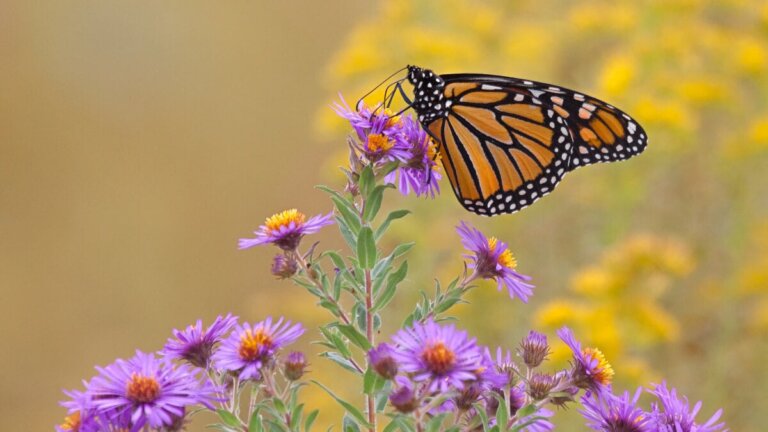
The presence of Lepidoptera, or butterflies, is essential for a healthy, happy garden. This is not only because of their aesthetic and colorful character, but also thanks to their pollinating function. These flying insects, together with bees and hummingbirds, carry pollen back and forth while feeding on nectar. For this reason, it’s important to have plants to attract butterflies to your garden.
Creating an environment conducive to their visit involves providing them with a water source, moist areas, and well-lit spaces. However, it’s essential to have some specimens of lavender, lantana, or milkweed. In addition, the Asteraceae family has several options that attract them. Read on and find out which plants to invite butterflies to stay and feed in your garden!
1. Lantanas

Lantana is a species that attracts butterflies because of its nectariferous nature – that is, it offers the nectar on which these holometabolous insects feed. In addition, it’s a plant that’s easy to take care of and boasts extensive flowering that will fill your garden with colors.
There are variants in yellow, pink, and orange tones, but the most recommended to bring Lepidoptera, including the monarch butterfly, are the camara and the trifolia.
Another advantage is that these species act as mosquito repellent.
Care
- Sunlight: it requires four to six hours of light or semi-shade daily.
- Watering: sporadically, but with good drainage and moisture in the substrate.
- Pruning: you can do it at the beginning of spring to favor a better flowering.
- Temperature: tolerates drought and high temperatures well, but not extreme cold.
We think you may be interested in reading this, too: Is It Possible to Change the Color of Flowers? Try this Method at Home
2. Verbenas
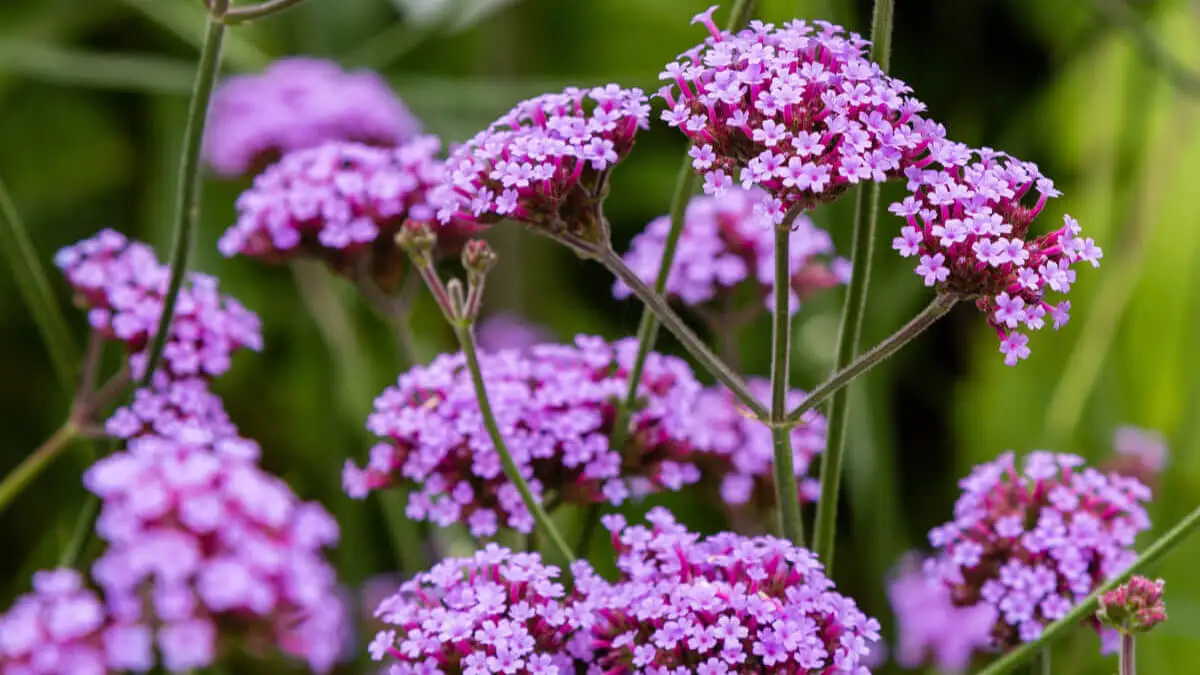
Verbenas are also full of nectar and present an attractive bloom, varying between white, red or pink. You can choose from any of its species to decorate your garden or terrace, while providing a feeding space for butterflies.
Similarly, verbenas also attract other pollinators, such as hummingbirds and bees. It’s versatile in terms of climatic conditions and only needs a few hours of sunshine.
Care
- Substrate: it’s important that it has good drainage and remains humid.
- Watering: it’s better to do it when you observe that the substrate is dry, since it does not need frequent watering.
- Temperature: like lantana, it prefers warm climates, tolerates drought well, and not temperatures below -10 degrees Celsius.
- Light and location: it needs many hours of sun, although this varies according to the climate. In very warm environments, indirect sunlight is better, while in cold places it’s convenient to expose it directly.
3. Asclepias
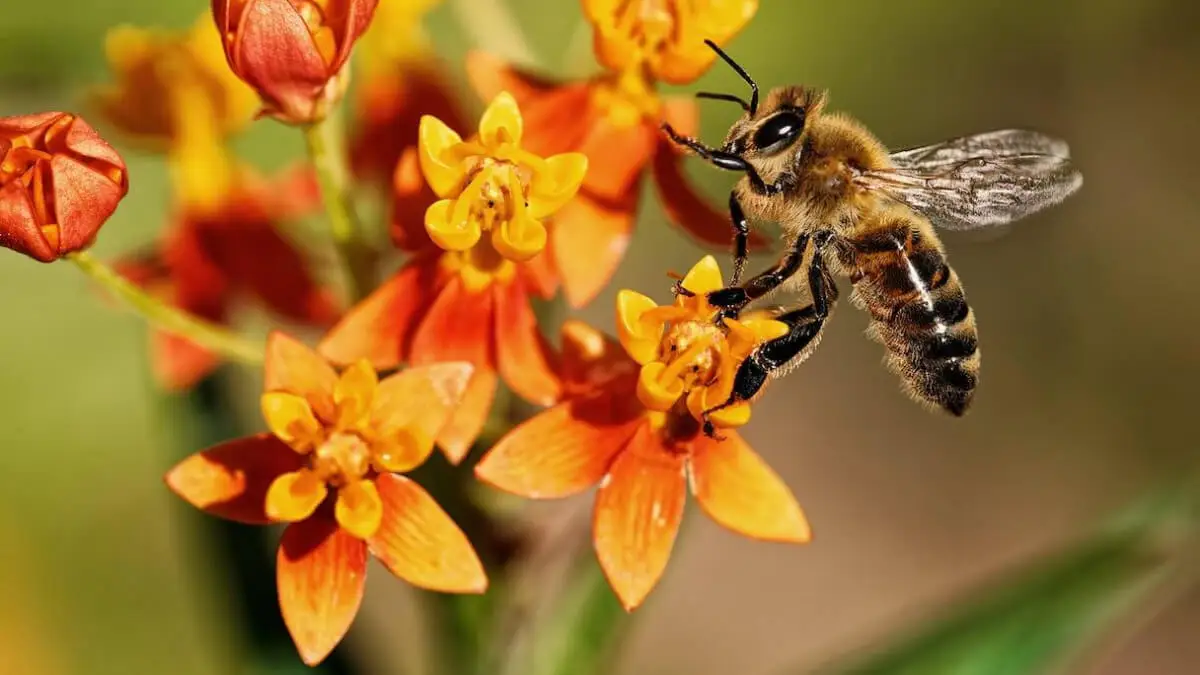
Asclepias belong to the Apocynaceae family and grow on roadsides and fields. Its presence in a garden with Lepidoptera is essential, as it’s one of the host plants for butterflies; especially the mellodora and curassavica variants, also known as milkweed.
This means that butterflies, especially the monarch, known for their size and migratory capacity, lay their eggs there for the caterpillars to feed on.
Care
- Fertilizer: mineral fertilizer is recommended in spring.
- Substrate: it should be permeable, with humus, peat, and good humidity.
- Watering: with a frequency of four to five days per week. It’s important to avoid waterlogging.
- Sunlight: in cold climates, it can be exposed directly to the sun. However, in hot environments, shade is recommended.
4. Mariposera (Austroeupatorium inulifolium)
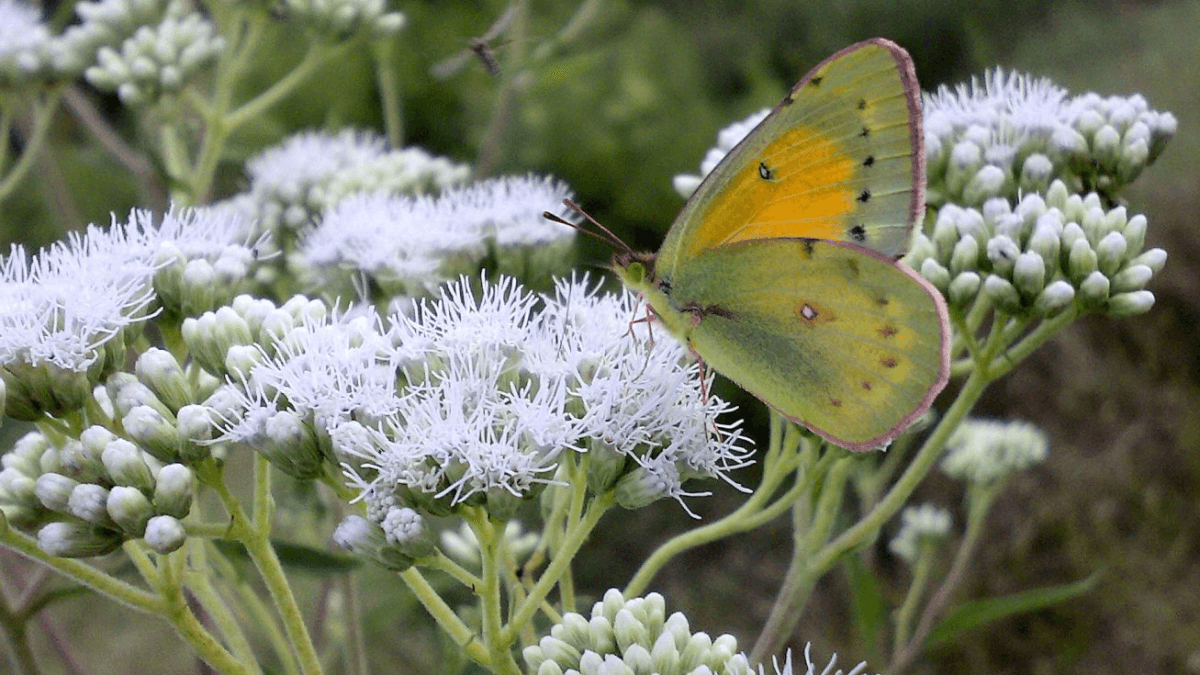
Native to Argentina, it’s capable of attracting butterflies of various species. It’s also a host of the genus Actinote. It has small and aesthetic white flowers that attract numerous pollinators with their perfume. It grows as a shrub and is common in many South American countries, such as the following:
- Peru
- Brazil
- Uruguay
- Paraguay
- Colombia
Care
- Soil: to locate it in those that are permeable.
- Irrigation: it prefers sporadic irrigations, of moderate intensity.
- Sunlight: it needs between five and six hours of sunlight daily.
5. Salvias are one of the best plants for attracting butterflies
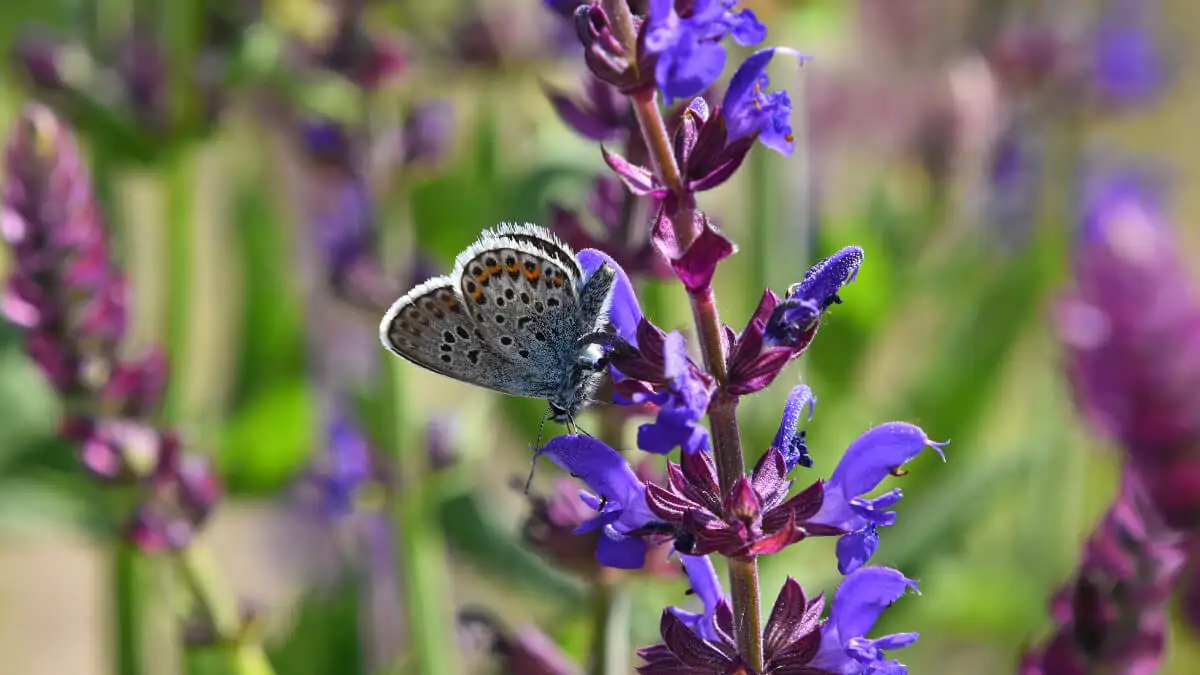
The types of salvias, belonging to the Lamiaceae genus, are known for their aromatic and healing properties. However, they can also be attractive to butterflies, especially large specimens such as Papilio and Battus.
Flowering colors range from white and red to blue and violet, and are likely to appear in any season. Also, salvias are plants that attract hummingbirds to the garden.
Care
- Substrate: well-drained and fresh is recommended.
- Watering: it’s best to water sporadically and check that the substrate remains moist.
- Sunlight: it prefers warm climates, above 15 degrees, and several hours of sunlight.
6. Lavender
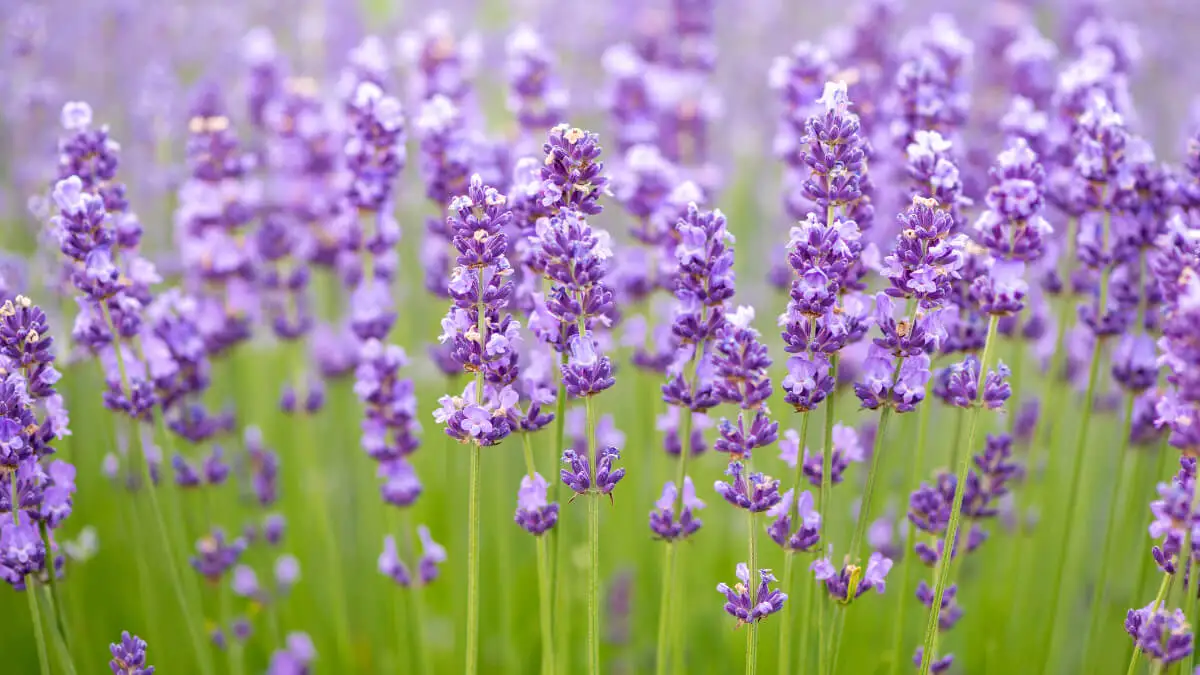
A versatile species that brings elegance, beautiful colors, and rich scents, hence, it’s often applied in flavoring products. These same characteristics are what enchant the Lepidoptera that come to seek its nectar.
It’s also a natural repellent for insects, such as moths and mosquitoes. Lavender oil also has a variety of uses. For example, to heal wounds or reduce hair loss.
Care
- Substrate: it must be alkaline and have good drainage. In fact, it uses sandy and dry soils.
- Watering: once or twice a week is enough. In winter, reduce the frequency.
- Temperature: it’s best with high temperatures, as it resists heat and drought well.
- Sunlight: it’s important to give it direct exposure, both for outdoor and indoor specimens.
Like this article? You may also like to read: 11 Purple Flowers to Make Your Garden Look Elegant
7. Poet’s Key
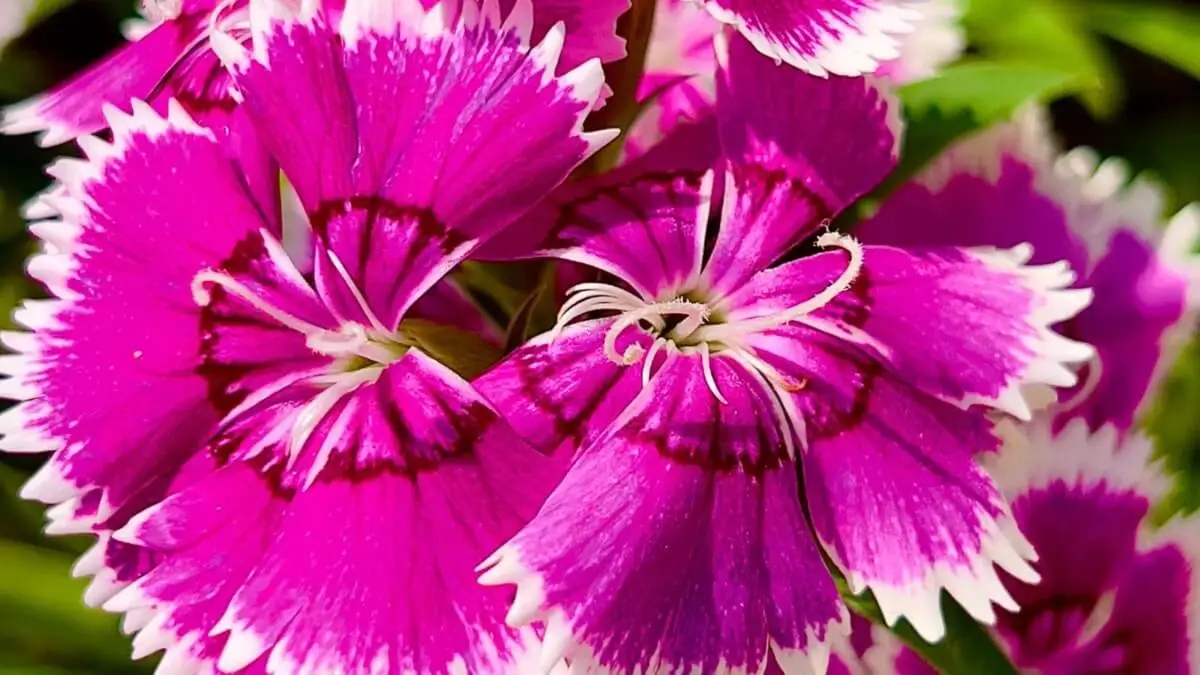
Dianthus barbatus is a very common plant in gardens because of its ornamental character. In addition to its colorful flowers, with shades of pink, white, and burgundy, it attracts butterflies and hummingbirds. This also occurs thanks to its charming fragrance.
Care
- Substrate: it must have good drainage and be alkaline.
- Fertilizer: include organic matter or compost to favor its growth.
- Watering: it needs frequent watering, but always with the precaution of not generating puddles.
8. Echinacea purpurea
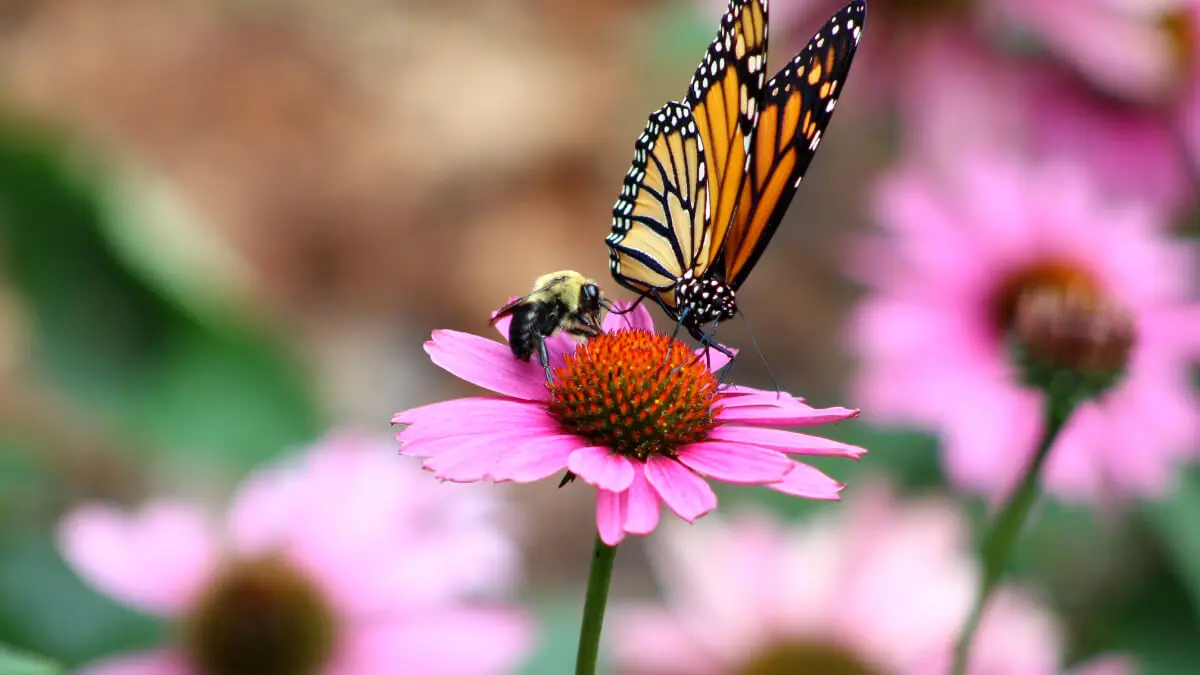
This is a beautiful plant of the Asteraceae family, with a large flowering that persists throughout the summer and part of the fall. It’s an ornamental species, which gives off an attractive scent and displays purple flowers.
Care
- Humidity: it provides a humid substrate that can resist the times of drought.
- Sunlight: it should be exposed to five to six hours of sunlight daily, although it also supports semi-shade.
- Watering: it’s important to water it moderately. It’s enough to water it once or twice a week, except recent planting, when it needs daily watering.
9. Centaurea nigra L.
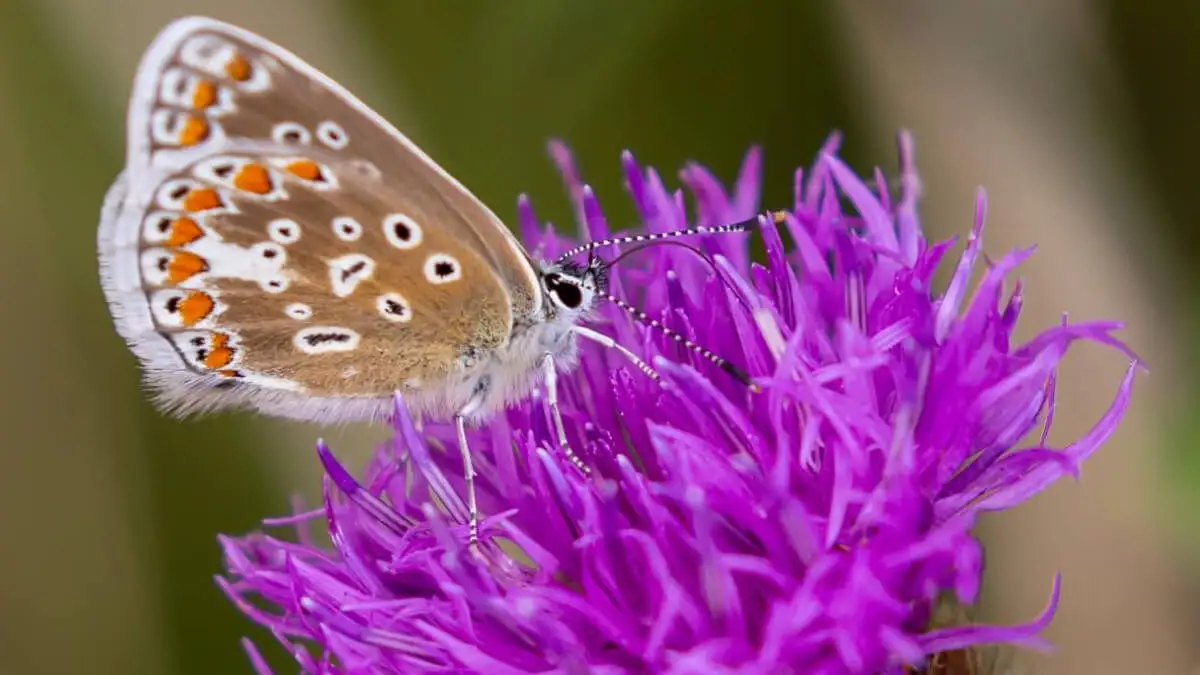
This is another specimen belonging to the Asteraceae family, whose violet and white flowers bring brightness and color to the garden. They attract numerous species of butterflies, such as meadow brown butterflies.
Care
- Substrate: Perlite facilitates drainage and keeps it cool. For these reasons, it’s recommended to include it in the substrate.
- Sunlight: it requires plenty of sunlight. To have abundant and bright flowers, no less than five hours a day.
- Watering: in hot weather, water it two to three times a week. In winter, reduce the frequency to one watering per week.
10. Marigolds are plants to attract butterflies
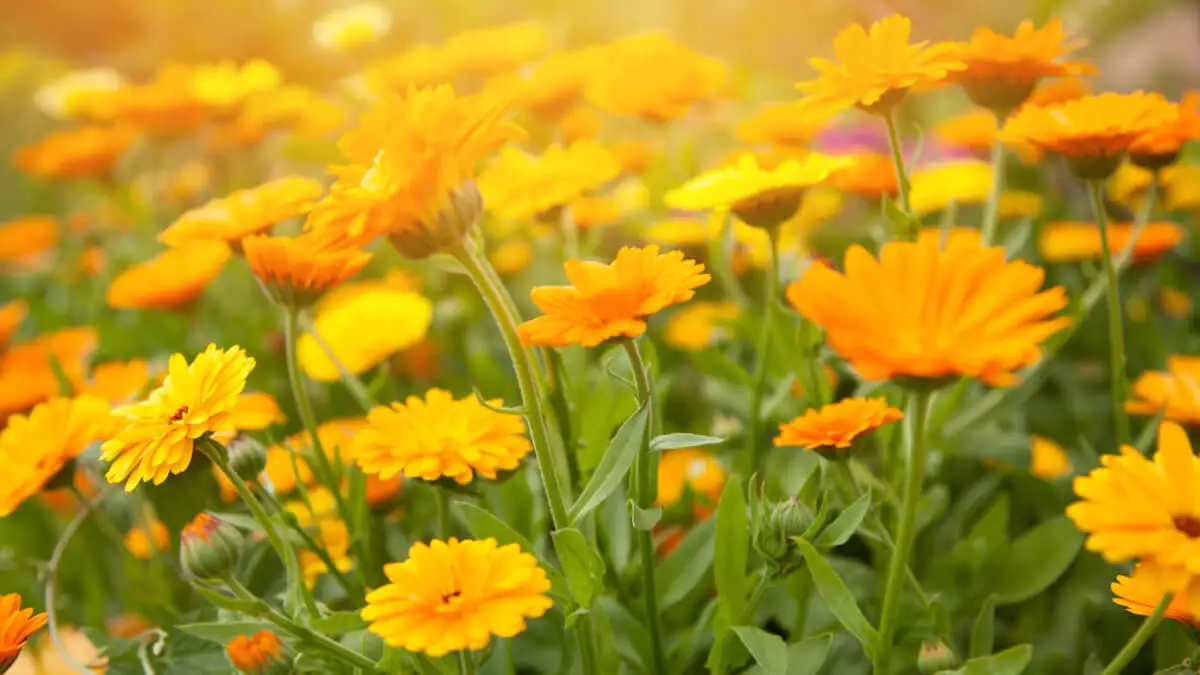
The marigold is not only an aromatic, ornamental plant with health benefits. Its orange and yellow flowers attract pollinators thanks to the abundant nectar. It’s fast-growing, easy to grow at home, and blooms consistently throughout the spring and summer.
Care
- Sunlight: prefers direct sunlight for several hours a day.
- Temperature: it resists cold temperatures better than warm ones.
- Watering: water it sporadically and with great caution so as not to cause water stagnation.
- Substrate: it can be versatile, but it must have good drainage. Add fertilizer only during the warm months.
11. Buddleja davidii (butterfly bush)
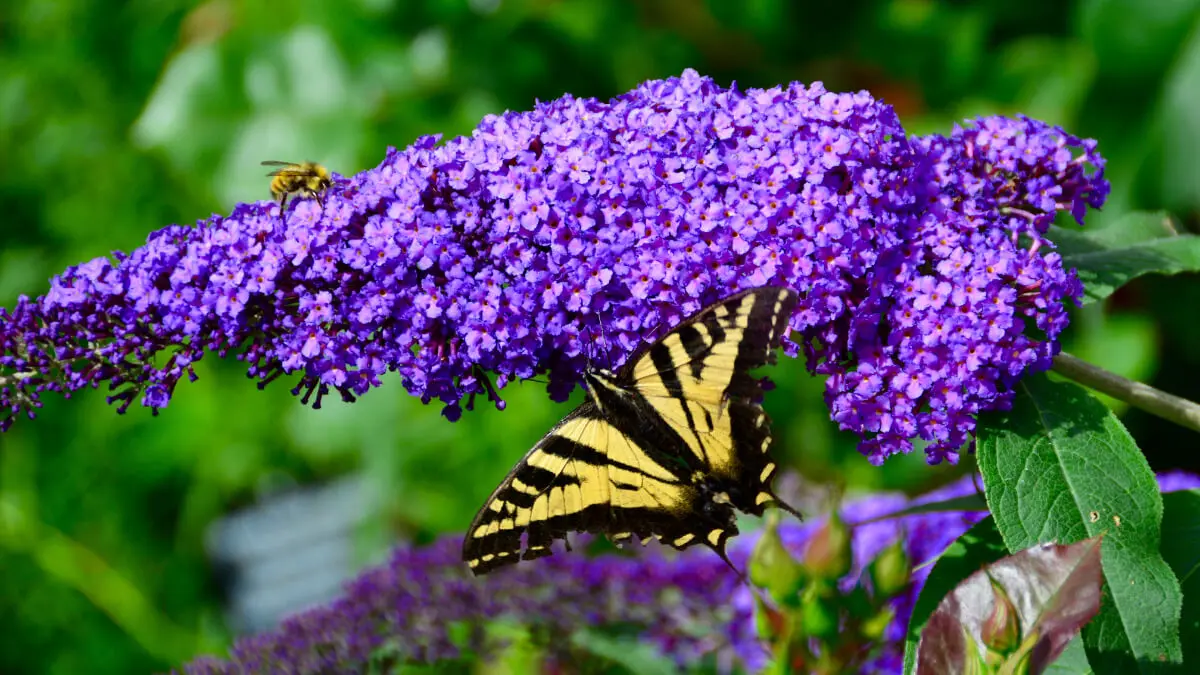
The nickname of this plant leaves no room for doubt: this is a shrub whose purple, pink, and yellow flowers attract butterflies of various species. They offer nectar in quantity, so it’s enough to place them in a sunny space for them to bloom and the Lepidoptera to come to the garden.
Care
- Light: it requires many hours of direct sunlight, since flowering depends on it.
- Substrate: it must be permeable and with humus. Make sure it has good drainage and fertilize only in early spring, before flowering.
- Watering: weekly watering is sufficient. During the first year after planting, it can be twice a week, as well as in the warm months.
12. Passiflora caerulea
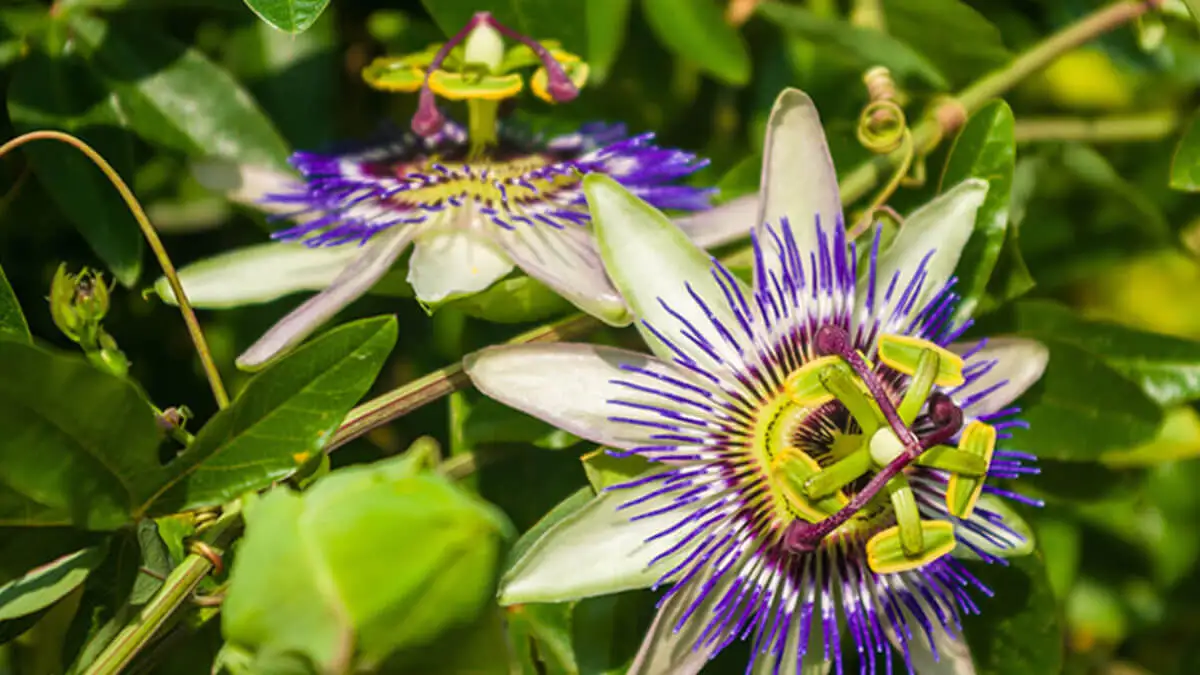
Known as mburucuyá or passionflower, this plant has aesthetic blue flowers, which are combined with white and purple tones. This is another specimen of a host character, whose flowering begins in summer and lasts until late fall.
Care
- Substrate: it requires well-drained soils with good drainage and humidity.
- Temperature: it likes a temperate climate, with temperatures around 20 degrees.
- Light: it needs spaces with good sunlight, although during the summer you can place it in a semi-shaded area.
- Watering: it’s recommended to increase its frequency in warm months, up to three times a week. The rest of the year, once is enough. Wet the leaves sporadically with a spray bottle.
13. Cosmos annuals
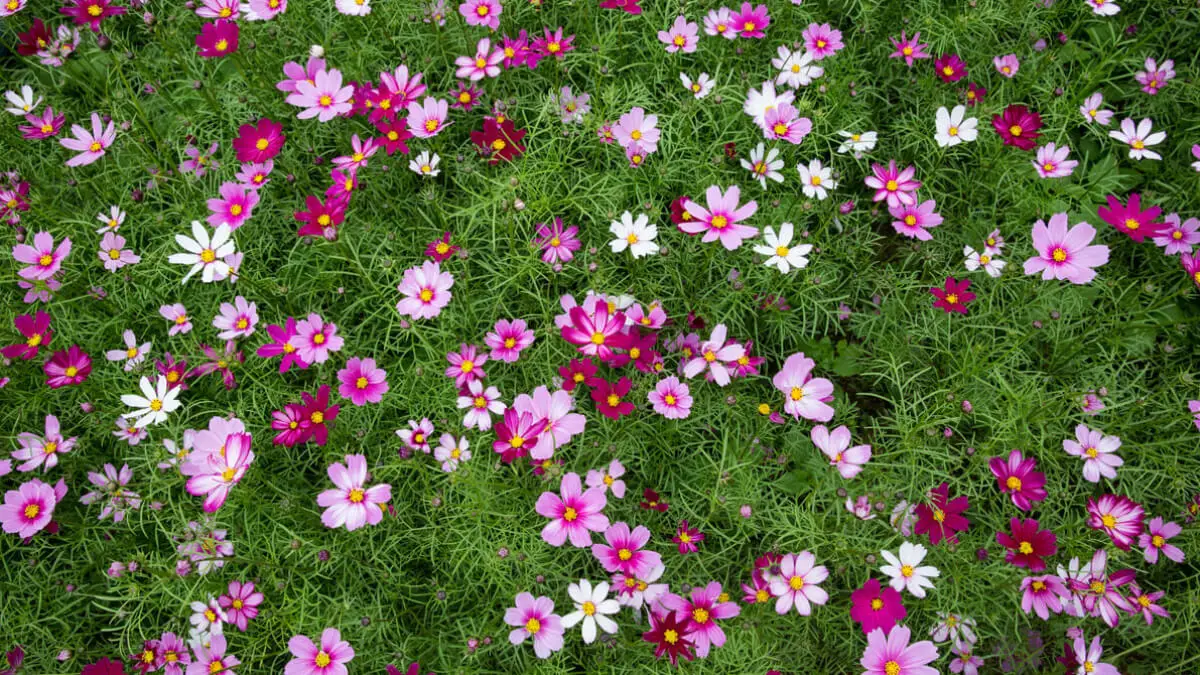
The tropical cosmos flower belongs to the Asteraceae family. In particular, the variants bipinnatus and sulphureus are butterfly-attracting plants thanks to their abundant flowers, in shades of white, pink, and orange.
Both bloom at the beginning of the summer and extend into the autumn.
Care
- Sunlight: it needs direct exposure, so it’s advisable to reserve a sunny corner.
- Watering: once or twice a week is enough. In the warm months, it can be up to three waterings.
- Substrate: common garden soil with good drainage is sufficient for its growth.
14. Elk flowers
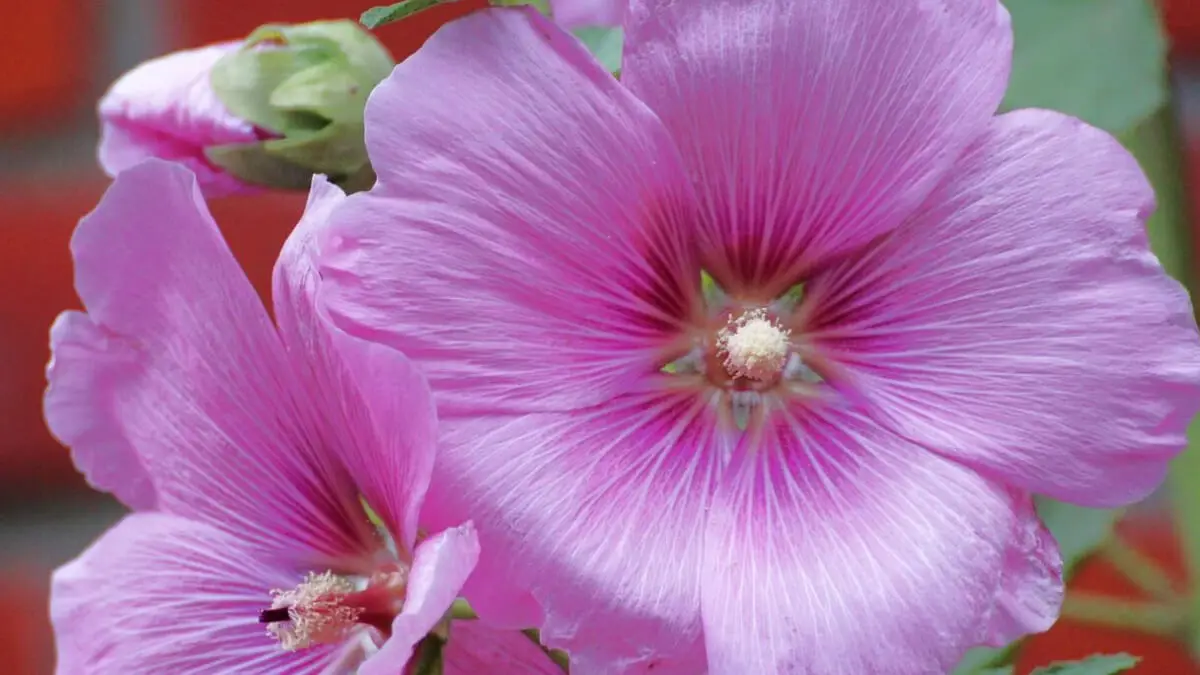
The genus alcea has more than 80 species, although the rosea variant is usually selected among the plants to attract butterflies. Also known as royal mallow, it has flowers of various shades of pink, but can range from purple to yellow.
Care
- Watering: moderate during the cold season and more abundant during the summer.
- Sunlight: it needs several hours of direct exposure or semi-shade. If abundant flowering is desired, it should be exposed to at least six hours of light daily.
- Substrate: it prefers humid soils, so this condition should be maintained in the substrate. Avoid waterlogging and excess moisture in winter.
15. Dahlias
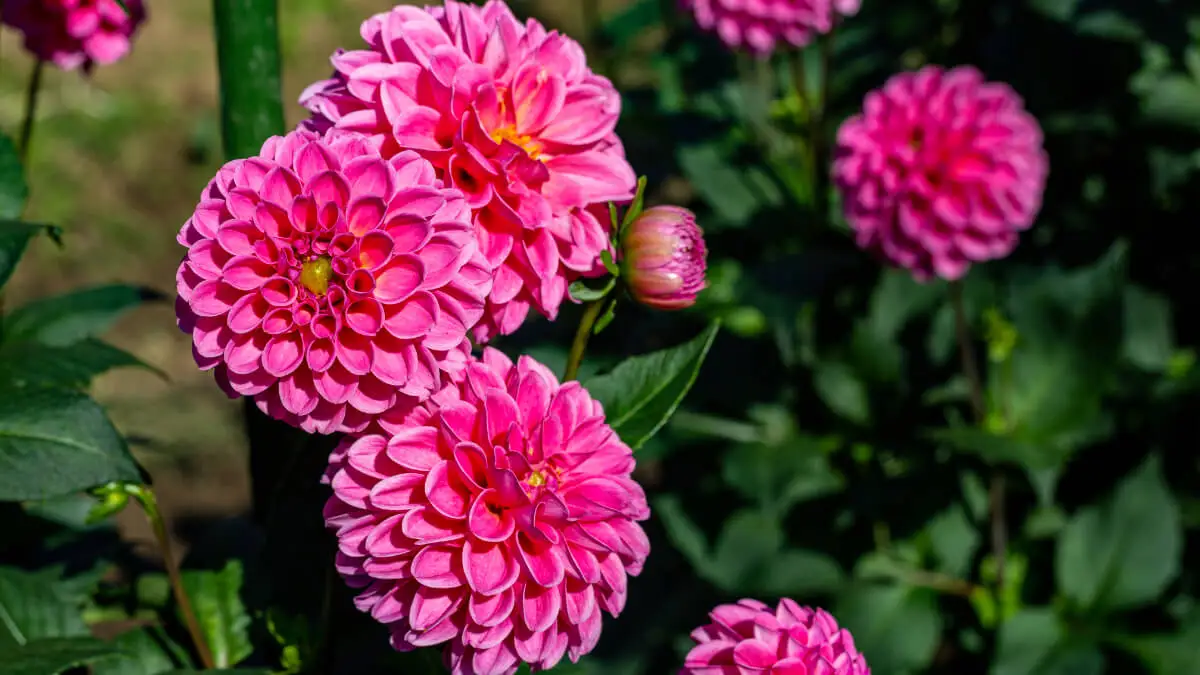
This is the national flower of Mexico. A variant of the Asteraceae family with abundant flowering, whose nectar attracts butterflies and bees. Its pink, purplish, and white flowers appear in the warm months and last until autumn.
Care
- Light: it needs good sunlight and direct exposure, especially in the cold months.
- Substrate: like other species, it favors well-drained soil with abundant organic material.
- Watering: This is one of the plants that tolerates heat and drought, but requires abundant watering. Water it twice a week in winter and three times a week in summer. Avoid wetting the leaves.
16. Rudbeckia
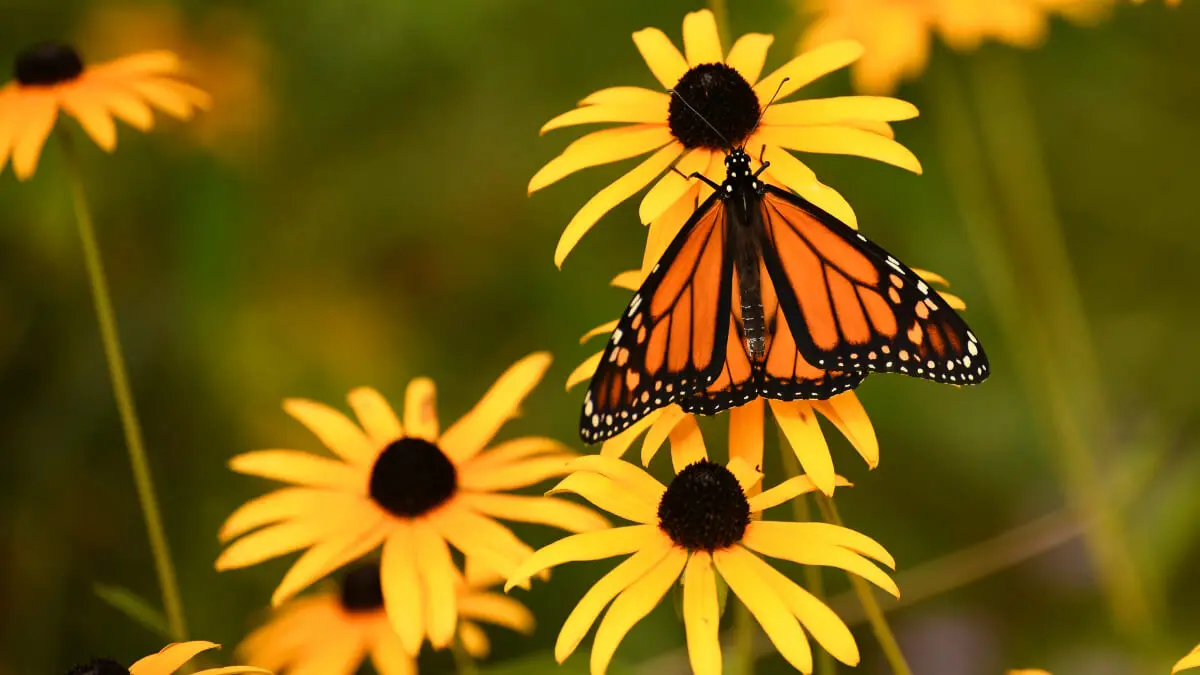
Also known as beetle flower or coneflower, its beautiful blooms in shades of yellow and orange add aesthetics to the garden. They are also very attractive to pollinators in general. The shape of the flowers is similar to daisies and they appear during spring to last until fall.
Care
- Substrate: it needs soil with regular conditions and good drainage.
- Temperature: Although it prefers warmth, it’s resistant to cold climates.
- Light: it requires a good amount of light, although it can be indirect or semi-shade.
- Watering: water it frequently, but always to the soil and without wetting leaves or flowers. Avoid waterlogging.
17. Asters
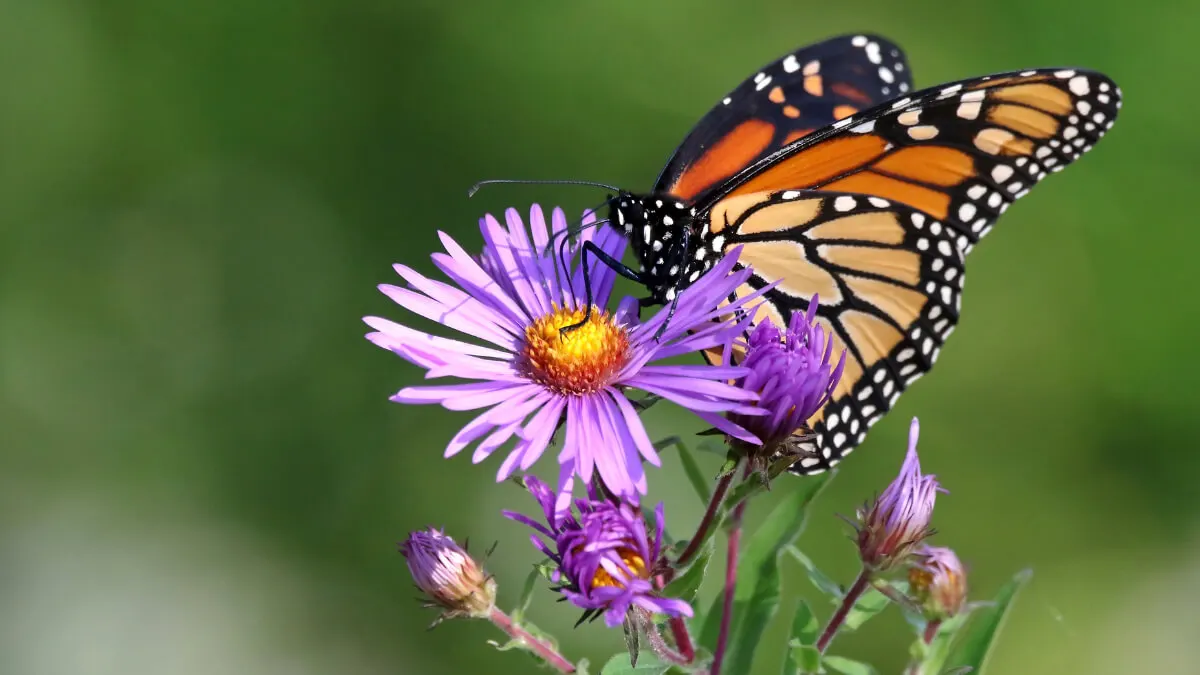
The last genus of plants to attract butterflies that we will see also has flowers similar to daisies. However, these autumn specimens have a very delicate violet hue. Asters have white, blue, and even pink variants that delight Lepidoptera of various species.
Care
- Watering: moderate, more frequently in summer and less frequently in winter.
- Substrate: keep it humid, but it’s important to avoid puddles and try to have good drainage.
- Light: flowering depends on the amount of sunlight. It needs several hours of exposure, direct if possible.
We think you may be interested in reading this, too: A Guide to Growing Heliconia at Home for Beautiful Flowers
Other tips to bring butterflies
If you are also interested in some tips on how to have a garden full of butterflies at home, we recommend making this space friendly for pollinators, by combining plants with the following conditions:
- Sunny corner: leave an empty space with soil and stones for the butterflies to rest.
- Water: like any species, butterflies seek refreshment and will do so in your garden if you provide small drinking troughs for their comfort.
- Low wind: leave water troughs and water features in spaces where there is little wind. Otherwise, they will not be able to stop and refresh themselves.
- Variety: combine different specimens among the 17 options described. Try to include some shrubs, some potted plants, and some vines.
Why are plants important for attracting butterflies?
Butterflies, and pollinators in general, are essential for maintaining balance in the ecosystem. Many of them are affected by conditions such as deforestation and pollution, in addition to pesticides.
Therefore, creating a space suitable for their visit not only makes your garden more beautiful, but also collaborates with their survival. So, what are you waiting for? It’s time to fill your patio or terrace with a diversity of colors and butterflies!
All cited sources were thoroughly reviewed by our team to ensure their quality, reliability, currency, and validity. The bibliography of this article was considered reliable and of academic or scientific accuracy.
- Lehner, S., Schulz, S., & Dötterl, S. (2022). The mystery of the butterfly bush Buddleja davidii: How are the butterflies attracted? Frontiers in Plant Science, 3315. https://pubmed.ncbi.nlm.nih.gov/36119599/
- Tiple, A. D., Khurad, A. M., & Dennis, R. L. (2011). Butterfly larval host plant use in a tropical urban context: life history associations, herbivory, and landscape factors. Journal of Insect Science, 11(1), 65. https://pubmed.ncbi.nlm.nih.gov/21864159/
This text is provided for informational purposes only and does not replace consultation with a professional. If in doubt, consult your specialist.








